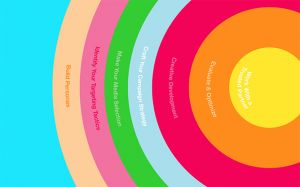
If your brand lives in the fintech space, hold onto your virtual wallet. 2022 looks to be another year of industry growth with think tanks predicting continued strides in embedded finance, the cryptofication of finance and payment modernization, removing friction without compromising compliance and regulation. Brands should consider evolving their marketing to keep pace.
Representing a diverse mix of financial technology solutions that are disrupting traditional financial services, fintech with an astute focus on user experience has become table stakes for everyone from banks and investment firms to insurance companies, software companies, and start-ups. Unfortunately, many financial institutions are falling short as they struggle to identify what they can do to streamline their apps to boost adoption and usage.
Fueled, in part, by the social isolation of the global pandemic, the fintech fire began its surge in 2020. In one example, a recent story from The Financial Brand shared that the use of mobile banking apps surged by 200% since the start of the pandemic, with about half of U.S. consumers now using some type of app. But are they happy with their digital experience? Many are not (more on that later).
BNO has been immersed in the fintech marketing space for some time, helping brands like MasterCard, CloudPay, Verizon, and New York Life engage customers and grow their market share.
As we prepare to usher in 2022, a few of our resident experts share their insights on five fintech marketing trends for the coming year.
![]()
#1 – Know Your Position
In a space packed with newcomers, it’s important for a fintech brand to know their USP and create a concise marketing message around it.
Matt Pfluger, VP of Strategy & Client Services at BNO, explains that knowing your position means truly knowing the audiences you serve. Providing financial services is complex business. There are legalities galore. Privacy concerns. Market volatility. Buyers know this – but they also don’t know what they don’t know. They expect you to translate everything they don’t know into a roadmap for who they are (Large C-Corp, Sole Proprietor, SMB, Side Hustler, Retiree, College-Saving Parent, and so on).
Are you a small business getting no love from a big bank? Or a homebuyer who feels like you’re swimming with mortgage banker sharks? Scenarios like these are opportunities to position your brand as their champion.
Bryon Lomas, VP & Creative Director, adds that in addition to knowing your position you also need to know that of your competitors. And if you find that your position isn’t unique, then find a voice and look that separates you from the crowd.
Lomas and Pfluger both agree that you can’t be all things to all people. If you do, you become irrelevant fast. So always stay true to your position.
![]()
#2 – Be the Expert
Very few people consider themselves to be financial experts. Banking, mortgage, insurance. It’s all subject matter that can quickly become complicated for the average consumer. To alleviate confusion, educate your audience.
Share content that shows you’re the expert in your field. Develop white papers, case studies, video content, social media posts, or blog articles that offer useful information and help answer consumer questions.
Lomas notes that creating all this content can become overwhelming – so be efficient with it. Repurpose and share it in different ways, because not everyone consumes information the same. Some like to read, others want to watch, some prefer to scroll.
In the fintech world, Pfluger adds that it’s easy for brands, the staff they employ, and the customers they seek to get caught up in style and flash at the expense of expertise and service. Being new and flashy can drive awareness and interest. But it’s not what closes the deal. Your brand needs beauty and brains. Having expertise and the intelligence of professionals who are the architect of your brand is what wins the day.
![]()
#3 – Go Mobile
Trista Walker, BNO President, shares this perspective on the current landscape of mobile solutions in the fintech space:
“You’d think by the year 2021, financial institutions would have mobile down cold. Not the case! As mentioned earlier in this story, mobile banking app usage has grown by 200% over the past year. However, more than a third of consumers are dissatisfied with their banking app experience.
Consumers are especially unhappy with the number of steps required to complete simple tasks, like opening a new account with the same institution. Consumers in very large numbers also lack trust in mobile security authentication functionality. These factors are forcing many – especially boomers and seniors – to default to traditional online banking instead of taking advantage of mobile experiences. It’s a shame, because I know many financial institutions invest a lot in mobile experiences – yet they’re still not getting it exactly right.”
Bottom line – when designing online experiences, make mobile a priority. And always monitor user feedback and assess ways to continually improve and evolve your mobile capabilities. You’ll gain better customer engagement and satisfaction.
![]()
#4 – Embrace Data
Data is a powerful tool. And thanks to technology, it’s easier than ever to collect it and easier than ever to assess and quickly act upon it – not only for your benefit but also for the benefit of your customers.
Abey Abraham, SVP of Operations, shares that data and the technology tools behind it can actually be used to protect data itself. For example, data loss prevention technology can be used to prevent fraudulent activity by establishments that are looking to exploit customers and their personal data. Authentication or encryption can apply the power of data to ensure that customers aren’t negatively impacted by unauthorized access to their information. In simple terms, you can protect data with data.
BNO Associate Creative Director Kelly Dress shares that the intuitive nature of data technology used in fintech can be used to drive a more convenient customer convenience. A financial institution that offers checking and savings accounts, as well as credit card products, can share data across all products and platforms – giving the customer a seamless user experience if they use multiple products from the institution.
Data can also be used to drive speed of service and create powerful marketing strategies with highly personalized, data-driven experiences that can sell more product or services or help answer a customer’s biggest questions.
![]()
#5 – Be Human
Your outstanding technology-based solution is what will attract and ultimately win over your customers. But at the end of the day, remember that your brand is engaging with humans. And they want to be treated as such.
Dress explains that if you can’t make an interpersonal connection with your customers, then you’re not doing it right. Showing human empathy – and reinforcing that your product or service makes things more efficient, easy, and convenient – will help create that connection and give you a customer for the long haul.
Pfluger adds that verbalizing the financial challenges, pains, and fears of your audience helps strengthen that human connection. Show how your empathy is the driving force behind your brand and the services you provide.
And when you help your audience overcome their challenges and fears, you’ll create brand ambassadors and could see your glowing reputation spread quickly. Some tech-savvy consumers could even take to singing your praises on platforms like TrustPilot, G2 Crowd, Reddit, or Twitter.
The pandemic has demonstrated the adaptability of some brands to shift quickly to a digital-first approach and deploy innovative fintech. If the user experience for your brand has been refined to reach digital natives in 2022 and you need help optimizing your marketing efforts, connect with BNO. Our team of account and project managers, strategists, art directors, content creators, production artists, and video editors will unite forces to help move your brand ahead of the competition.



